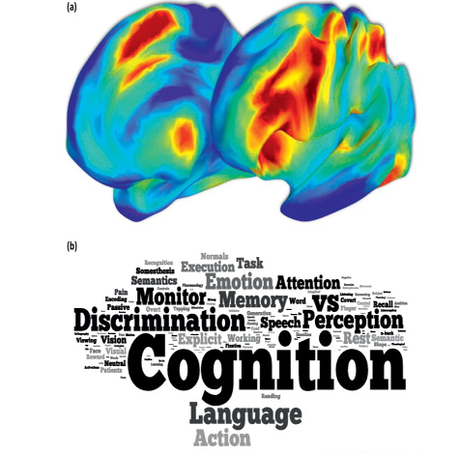Behrens et al. do an interesting analysis, asking:
Are there really trendy parts of the brain? Or does each scientist falsely believe their own research area to be underrepresented in the top journals, and their friend's recent Nature paper to be the result of a passing fad? The maturity of functional brain imaging allows us to perform a rigorous test of this instinctual feeling. There have now been many thousands of imaging papers published across the journal spectrum. Are some brain regions really overrepresented in this literature? In addition, are papers reporting activation in some brain regions preferentially published in high-impact journals, whereas others are published in low-impact ones? To answer these questions, we examined 7342 functional contrasts published between 1985 and 2008 and documented in the BrainMap database.

Figure - (a) Distributions of activation frequency across the brain. Popular voxels are portrayed in red; unpopular ones in blue. (b) Frequency distribution of keywords describing experimental domains, paradigms, and functional contrasts. The size of each word is proportional to its frequency in the BrainMap database.
Journal impact factor strongly predicted activity in several different brain areas. With one exception in the primary visual cortex, we suspect these brain regions would largely confirm anecdotal hypotheses. For example, researchers who find activity in a prescribed part of the fusiform gyrus should be confident of having their article selected for publication in a high-impact journal, perhaps due to the role of the region in face processing. Other regions with proposed roles in emotional processing returned similarly stellar performances, including both the ventral and dorsal portions of the rostral medial prefrontal cortex, the anterior insular cortex, the anterior cingulate gyrus, and the amygdala. The recent interest in reward prediction errors might explain impactful peaks in the mid-brain and ventral striatum, areas that exhibited independent significant effects of impact factor, publication date, and their interaction: studies reporting activation in these regions are published in high-impact journals, and are increasing in number (as a proportion of all studies) over time.

